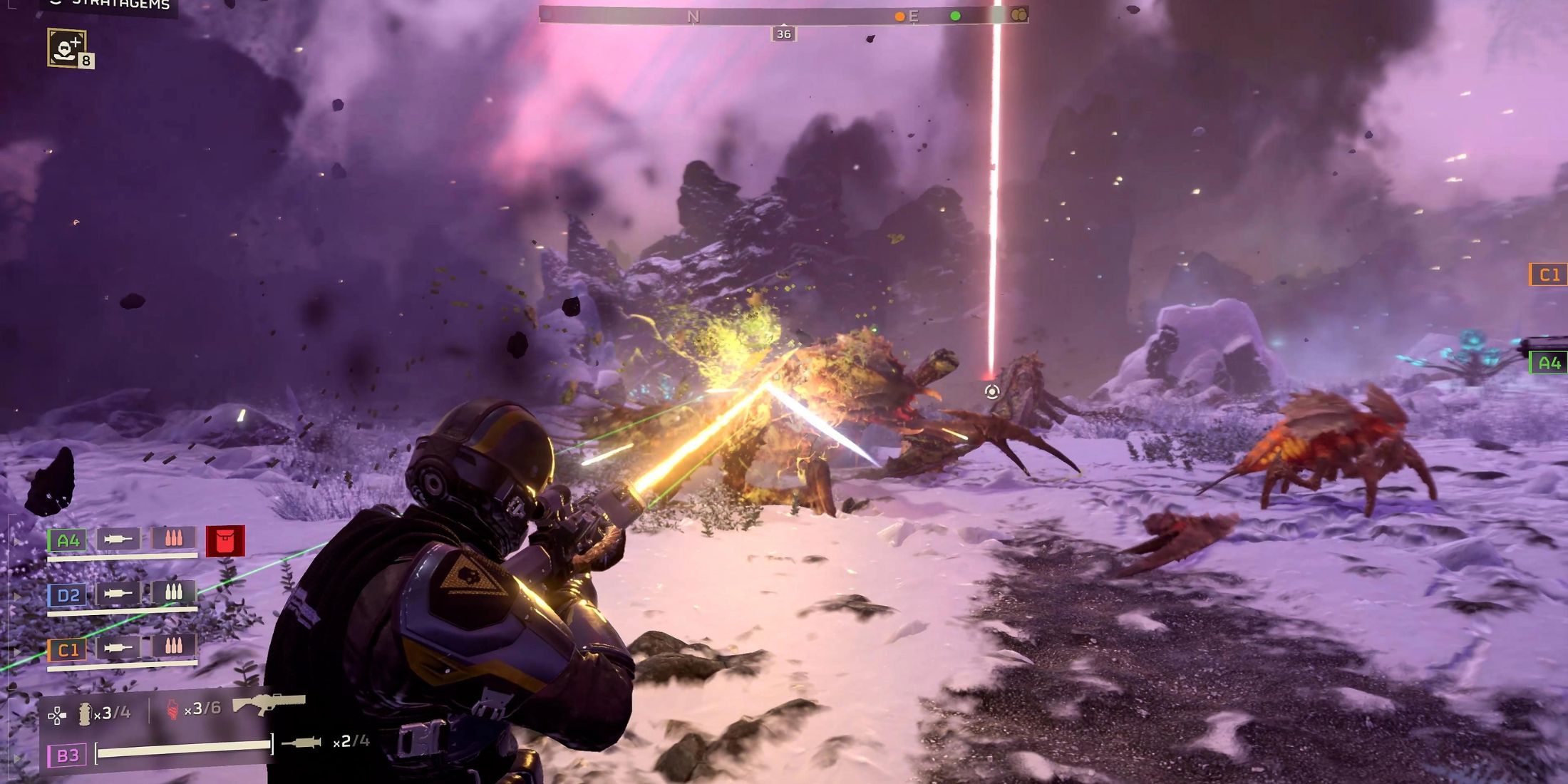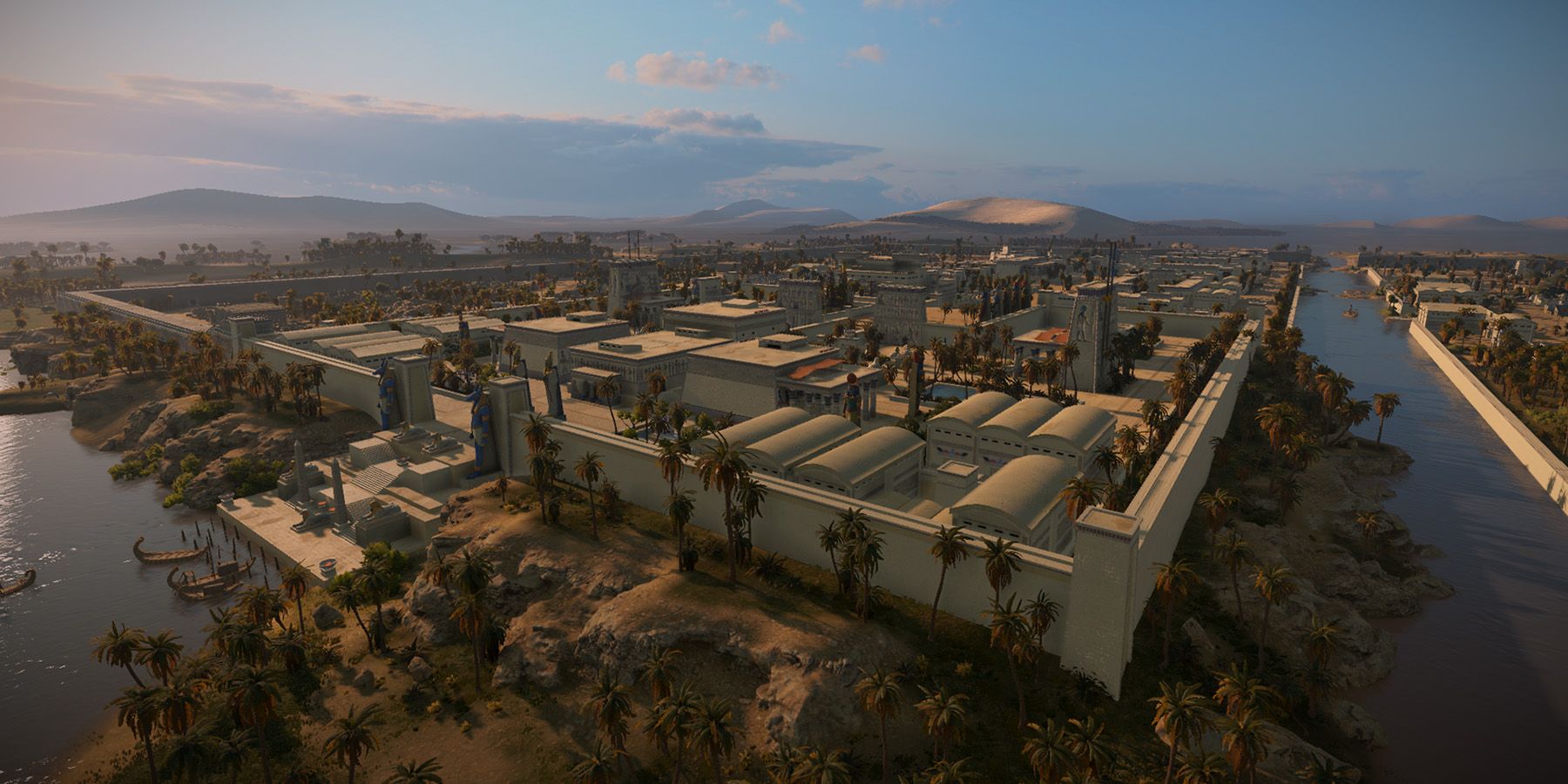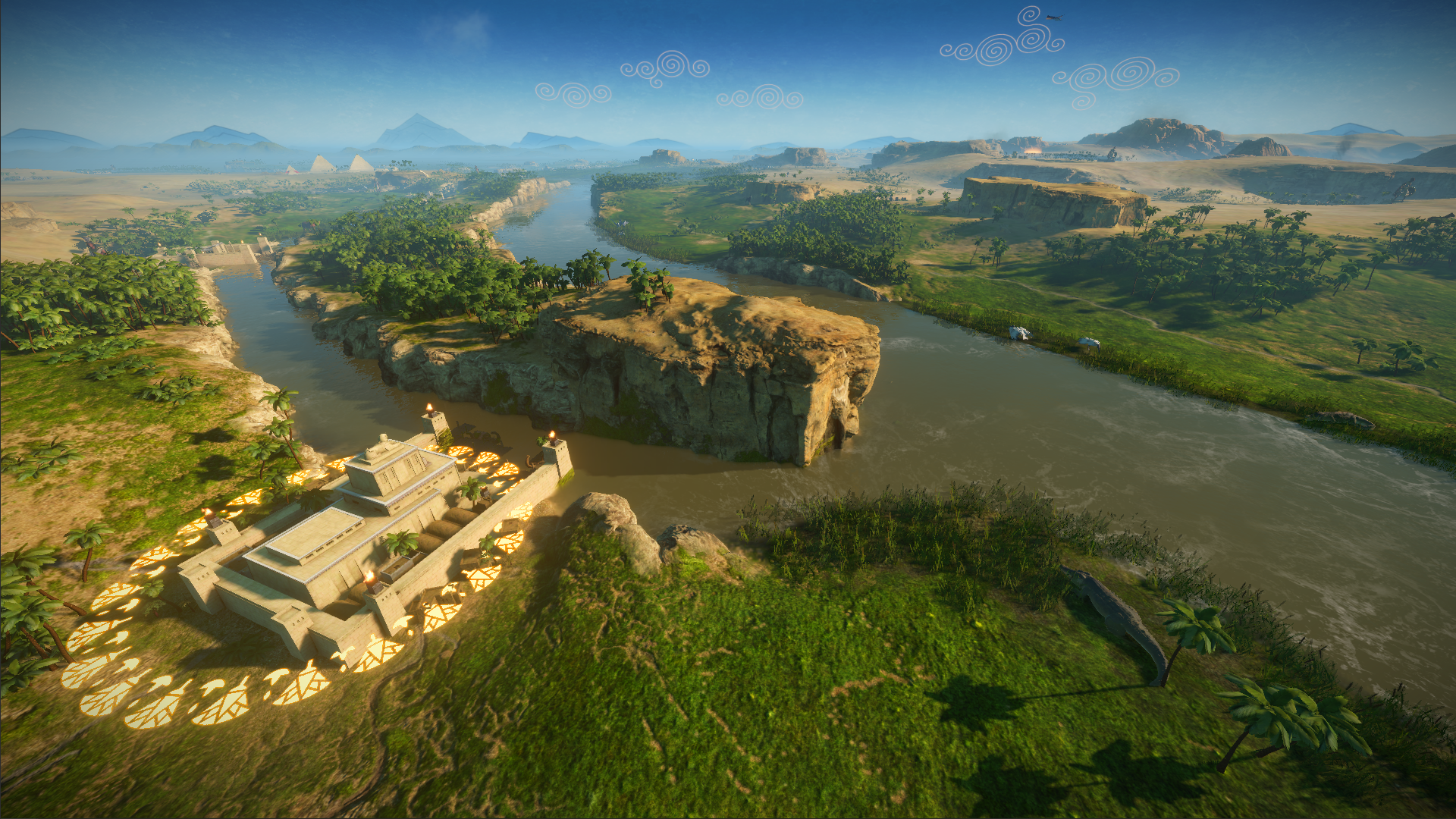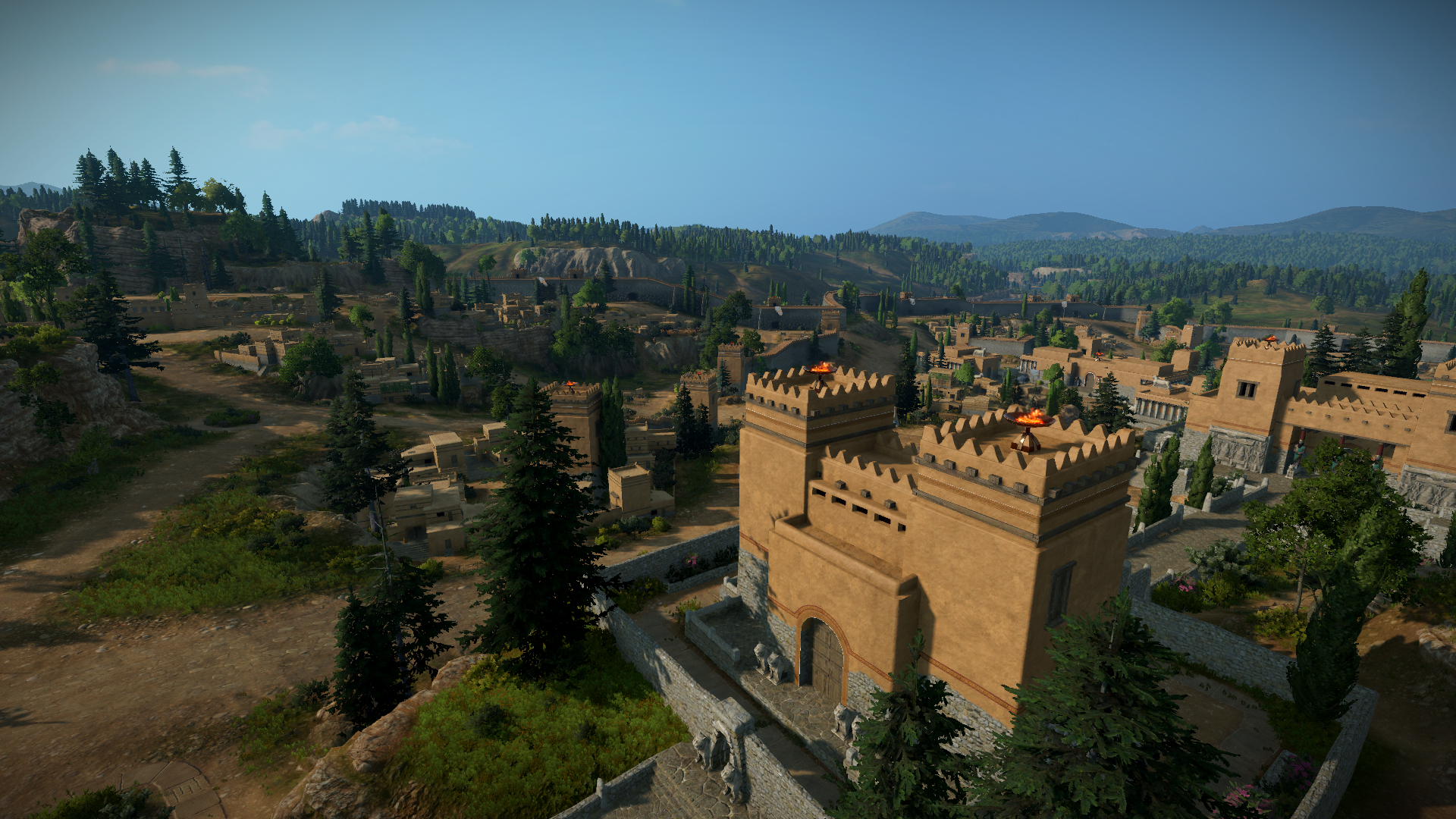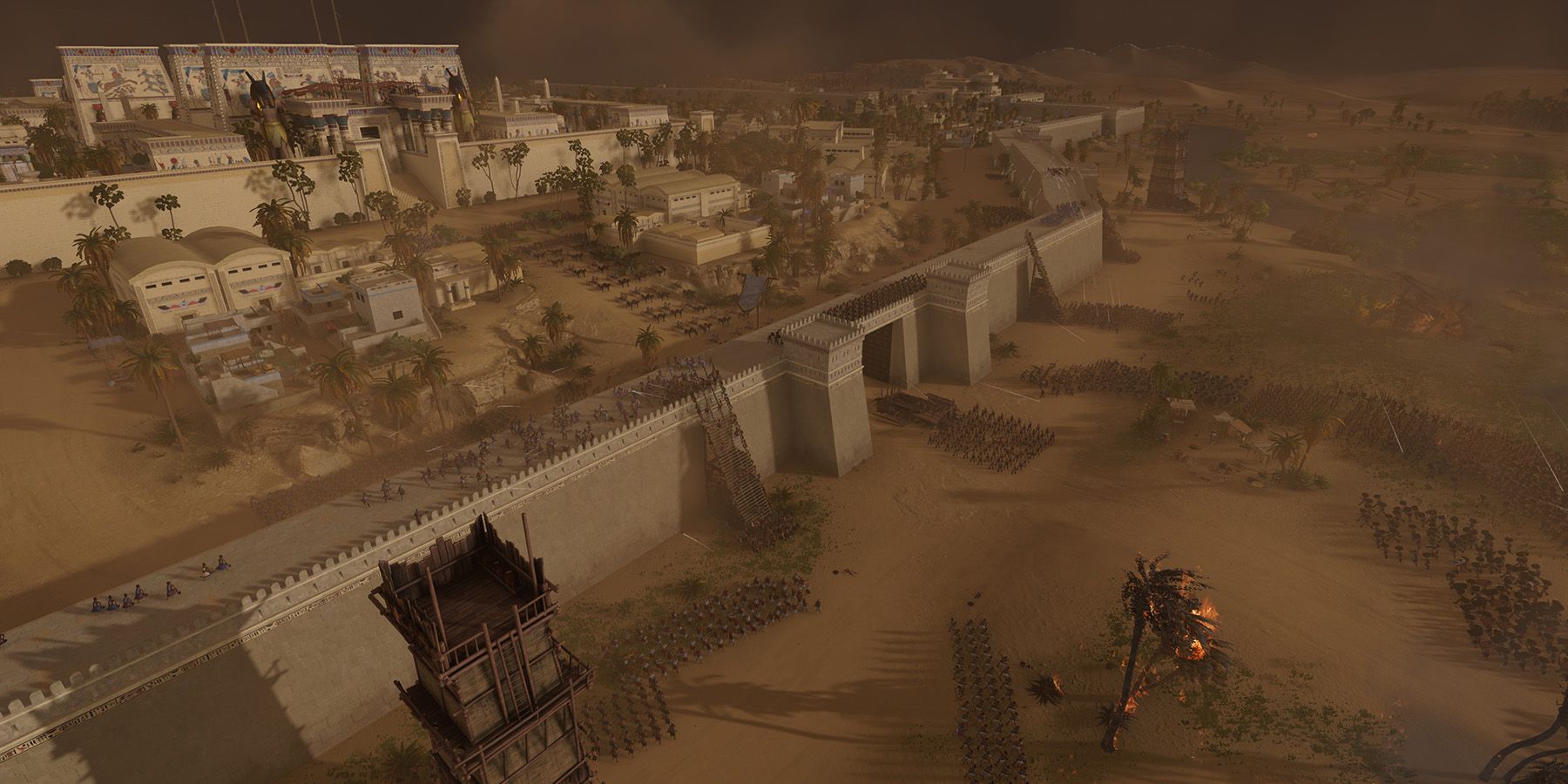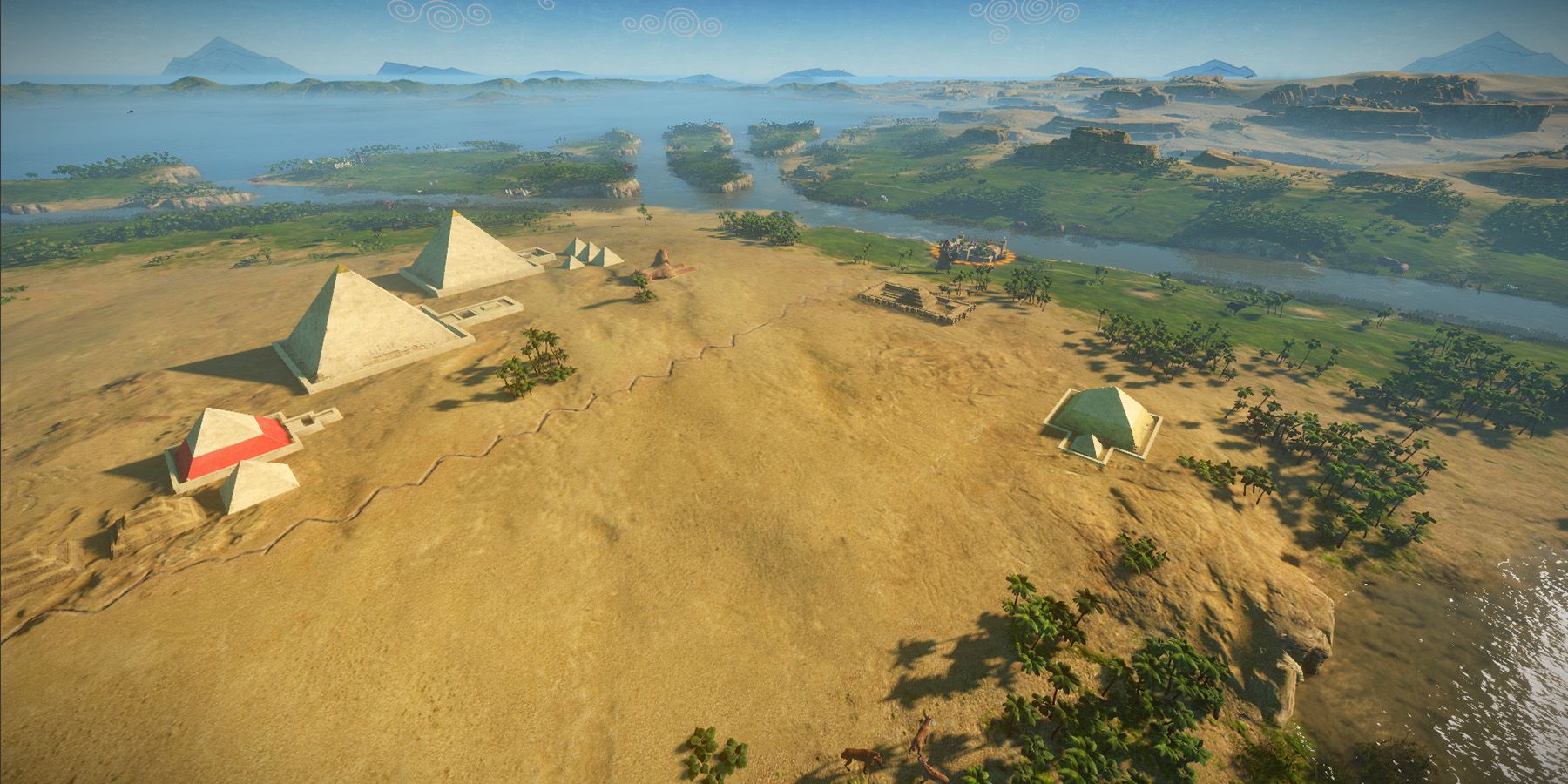Next month, Total War: Pharaoh will be taking fans back in time to a previously untapped era. The Bronze Age collapse will be taking center stage in this brand-new experience, and so far, it seems like it should be worth the wait. Creative Assembly is staying true to the core of the franchise while also introducing a plethora of new features to let this one stand out from the crowd. Not only should players expect numerous changes to the battles, but Total War: Pharaoh's campaign will also be filled with new concepts and ideas.
Campaigns are a core part of the franchise experience, and Total War: Pharaoh is no different. The high-stakes mode will put players in charge of one of the many factions of the time as they fight to survive in a slowly collapsing world. Creative Assembly is hoping to deliver a historically accurate adventure while also giving players the ability to manipulate that history to their liking. While the success of that approach remains to be seen, Game ZXC was able to check out a bit of this mode during a recent hands-on preview event. Over the course of 50 turns, we were able to see what Total War: Pharaoh's campaign has in store, and it seems like it should be an exhilarating time.
The Total War: Pharaoh campaign preview put us in control of Ramesses, the game's mascot. We started with only a couple of cities and were told to figure the rest out. We could go after our neighbors, play some diplomatic games, attempt to make a bid for the Pharaoh's crown, build out our territory, or prepare for the inevitable invasion of the Sea People. While we could have been smart and played it safe, we chose to be aggressive instead. We lashed out against the first city we saw and were quickly embroiled in a war for the North Sinai region.
Total War veterans should know what to expect from th campaign. The world is presented to them via a top-down view with cities strewn about the map. Cities that the player owns are labeled green, neutral cities are gray, and enemy cities are red. Players can see the troop movements of everyone else, they can watch cities get attacked, and everything they have not discovered is shrouded in clouds. The biggest difference is the setting, while the UI and mechanics are a staple of the franchise at this point.
The battles themselves also feel like past Total War games, albeit with a few exciting additions that help shake it up a bit. For starters, each battle starts with a weather forecast. Creative Assembly has introduced new weather effects that help make battles a bit more exciting. Each battle begins with a notice of the positive and negative effects of the current weather conditions and how that weather will change over the course of the battle. One battle saw us fighting in a rainstorm which impacted our archers' accuracy, and then the battlefield was eventually coated in a thick layer of fog that hurt everyone's visibility. While there is a chance these storms will get annoying after a while, so far, they feel like great additions to the formula.
Almost everything else about Total War: Pharaoh's battles feel pretty standard for the franchise. Players place down their troops however they want, the battle begins, and chaos ensues. Creative Assembly did give the units more weight and gave players a bit more control over their movements, but that may not be noticeable to many players. The leaders also do not seem to have any special abilities like they did in Total War: Warhammer 3, which makes sense since this game is rooted in history.
After clearing the enemy out of the North Sinai region using our starting army, we were granted a couple of victory points. One of the primary goals of Total War: Pharaoh's campaign is to earn victory points by completing various tasks. Players can earn them by capturing entire regions, holding great cities, accomplishing various feats, and being an ambitious person. 60 points gives players a minor victory, 80 gives them a major one, and 100 is the ultimate victory. Each task rewards different amounts of victory points, so players may want to plan accordingly.
Once North Sinai was ours, we decided to build up our cities a bit before heading out on our next conquest. Just like with the battles, Total War: Pharaoh's settlement building works similarly to past Total War games. Each city has a select few slots for buildings, with bigger cities having more slots. The various building types give players different bonuses and the cities different functionality, and most of the buildings have multiple tiers of upgrades that can be built. However, players will definitely want to keep an eye on their resources and costs, because we had a bit of a resource shortage after building way too much.
The biggest new addition to Total War: Pharaoh's city management is the new outpost feature. Instead of having all the buildings centered on the cities, players can now build a couple of outposts throughout the map. These outposts are a lot smaller than the cities are, with players needing to be aa bit more selective about what type to build, but their inclusion really helps add to the strategic aspect of the game. We primarily built defensive and economic outposts because we desperately needed them after we decided to be a bit too aggressive, but there are also outposts that can help with faith if players are playing the religion game.
Speaking of faith, Total War: Pharaoh also has a bunch of deities that players can worship for different bonuses. They can worship three gods at a time with each one granting players access to their shrines and temples. We only ever worshiped Ra as we were focused on not being killed by our neighbors. Ra gave our armies many different boosts to their morale and damage that helped immensely. While each deity has three levels of worship with new powers for each tier, we only ever reached tier two with Ra. We also ended up devoting our starting general to the god, which gave him various bonuses on the battlefield.
At one point, we were able to gain the seat of Vizier on the Egyptian Court. This court is made up of six different seats with the top seat being the Pharaoh himself. Every turn, players can take actions against one of the other members of this court. This can be a form of intrigue, a simple request, or they can form a plot against them. Knowing how to manipulate this system should prove greatly beneficial as each position offers its various benefits. However, holding a position on the court may also make player a target so it's a two-way street.
As we fought back against our angry neighbors and played with the intrigue systems, the world was teetering on collapse. Creative Assembly has introduced the Pillars of Civilization feature which tries to emulate the feeling of the Bronze Age collapse. As happiness falls and the world is embroiled in war, the stability of the world drops. It is presented in three tiers with each tier creating a darker and more turbulent world. Players want to try everything they can to keep it from falling apart, but they must be willing to work together with other factions to achieve that...and we had angered everyone else.
After claiming another region, the world seemed to turn on us. In a last-ditch effort, we attempted to claim one of the cultural centers of the world. These centers are crucial in keeping the Pillars of Civilization high, but they are a bit challenging to claim. Players must initiate a conquest, complete various tasks, and then actually invade the place. We tried to do all of this to the city of Gubla, but ultimately failed once the Sea People arrived.
The Sea People arrived from the waters, started ransacking our cities, and pushed us back. They, along with the other enemies we made, backed us into a corner. By turn 40, we had lost almost everything we worked to achieve. Even the countless technologies we had earned through the research web were not enough as our civilization came crashing down. Maybe it was the fact we had messed around with the campaign customization features too much, maybe it was because we were too aggressive, or maybe it was because we were never cut out to be the Pharaoh. Whatever the case, our time in Egypt quickly ended.
While our Total War: Pharaoh campaign preview may have ended in failure, it was still a lot of fun to get there. We were able to experience many of the new features, but it feels like we barely scratched the surface. There was still a massive technology tree to complete, we had never captured a cultural center, becoming the Pharaoh brings with it even more unique mechanics, and we never got to try out the vassalization feature. There is still so much waiting to be discovered, so hopefully our first official Total War: Pharaoh campaign run will go a bit better at launch.
Total War: Pharaoh will be available for PC in October 2023


